Year 8 Linear Functions Worksheets
Drawing Gradients (A)
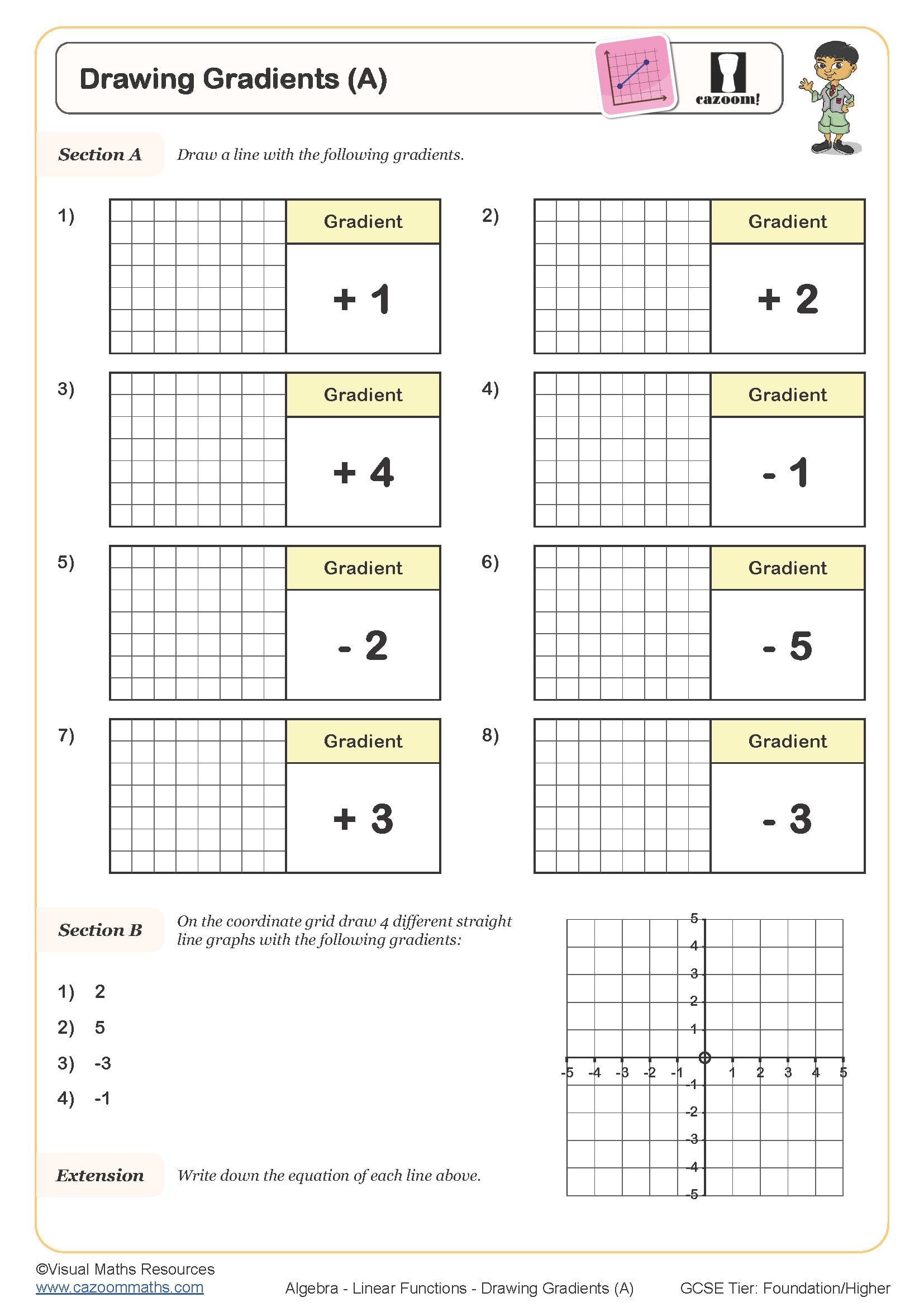
Drawing Gradients (B)
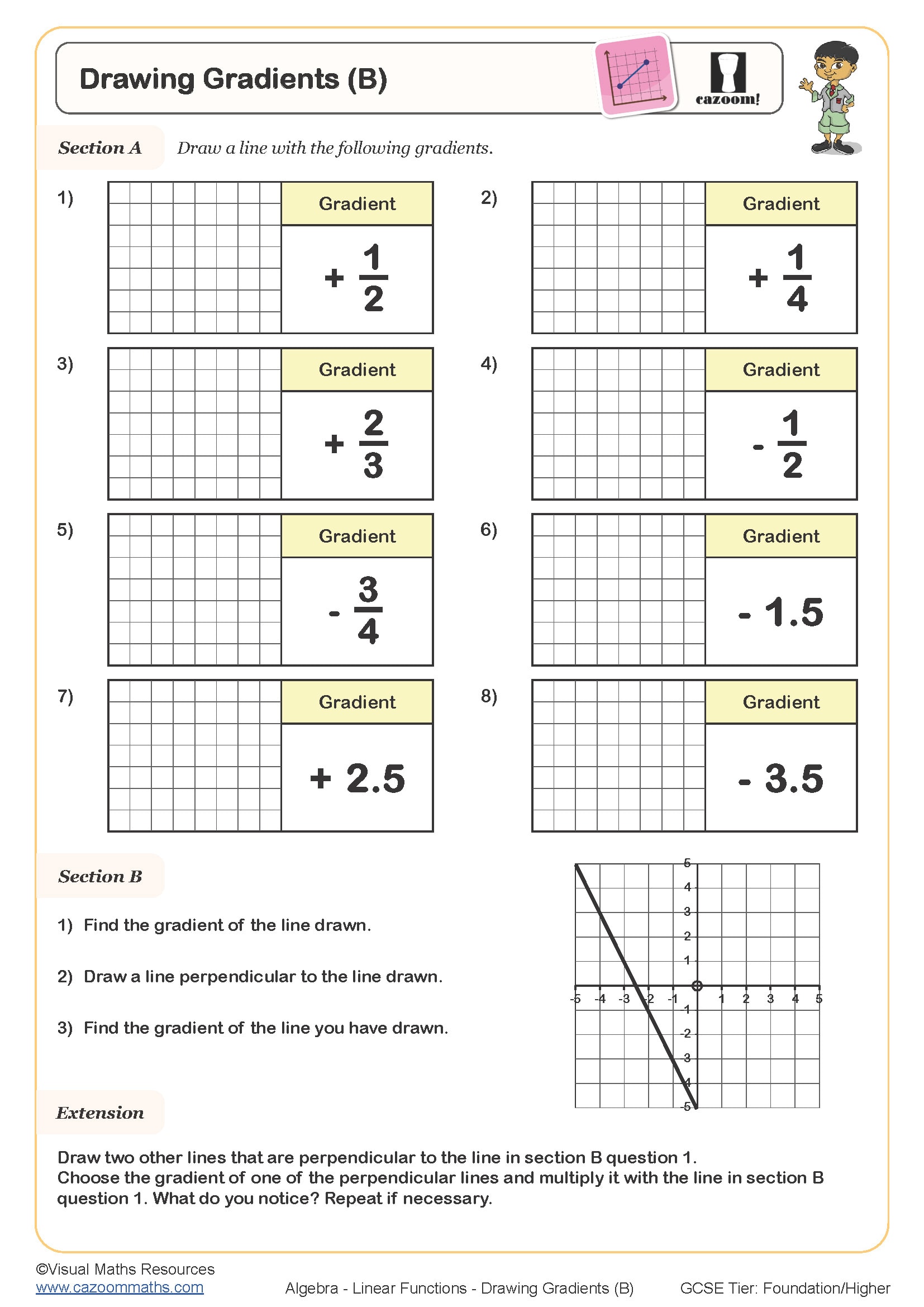
Drawing Straight Line Graphs
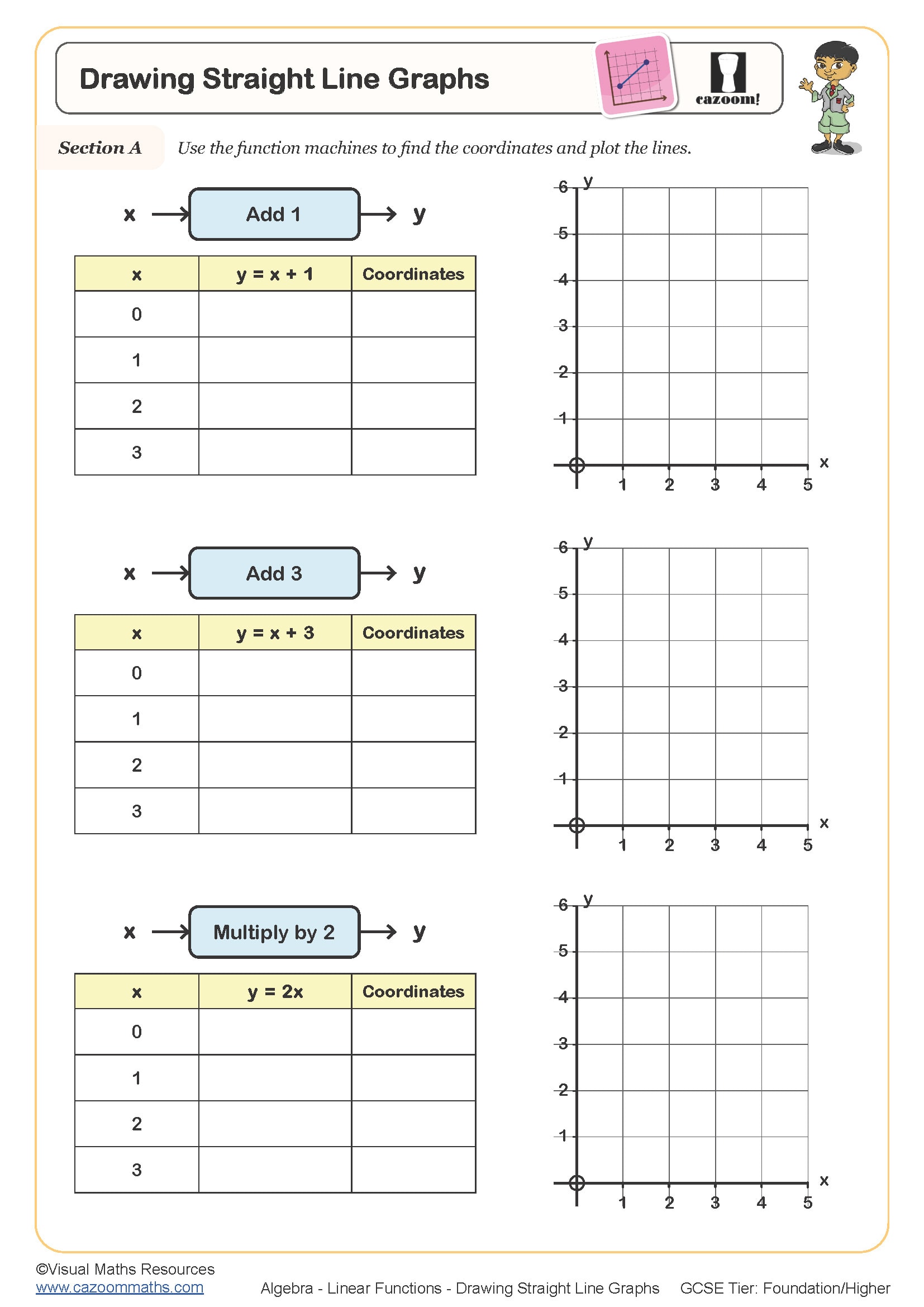
Finding Gradients (A)
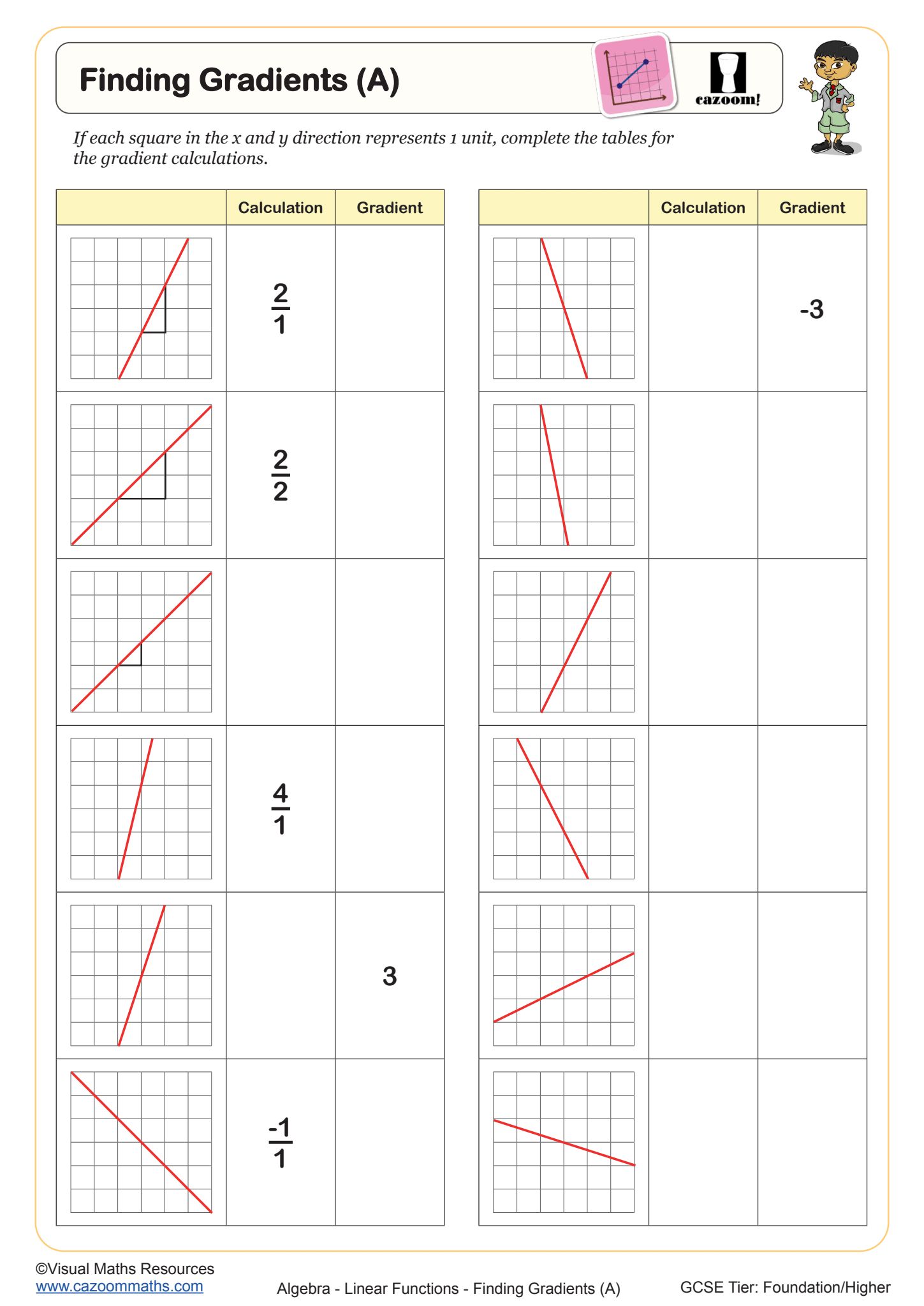
Finding Gradients (B)

Finding Gradients (C)
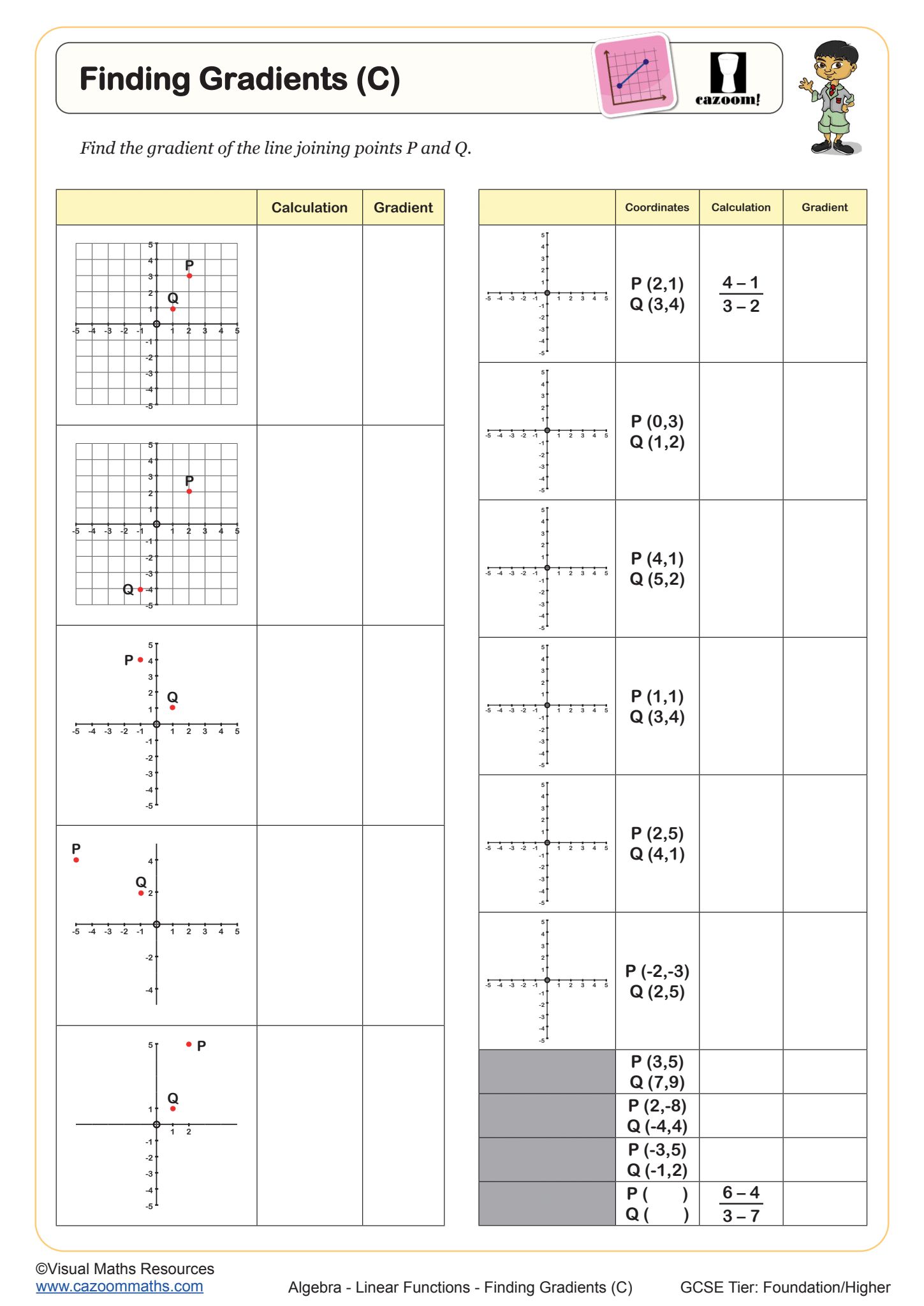
Finding the Intercepts
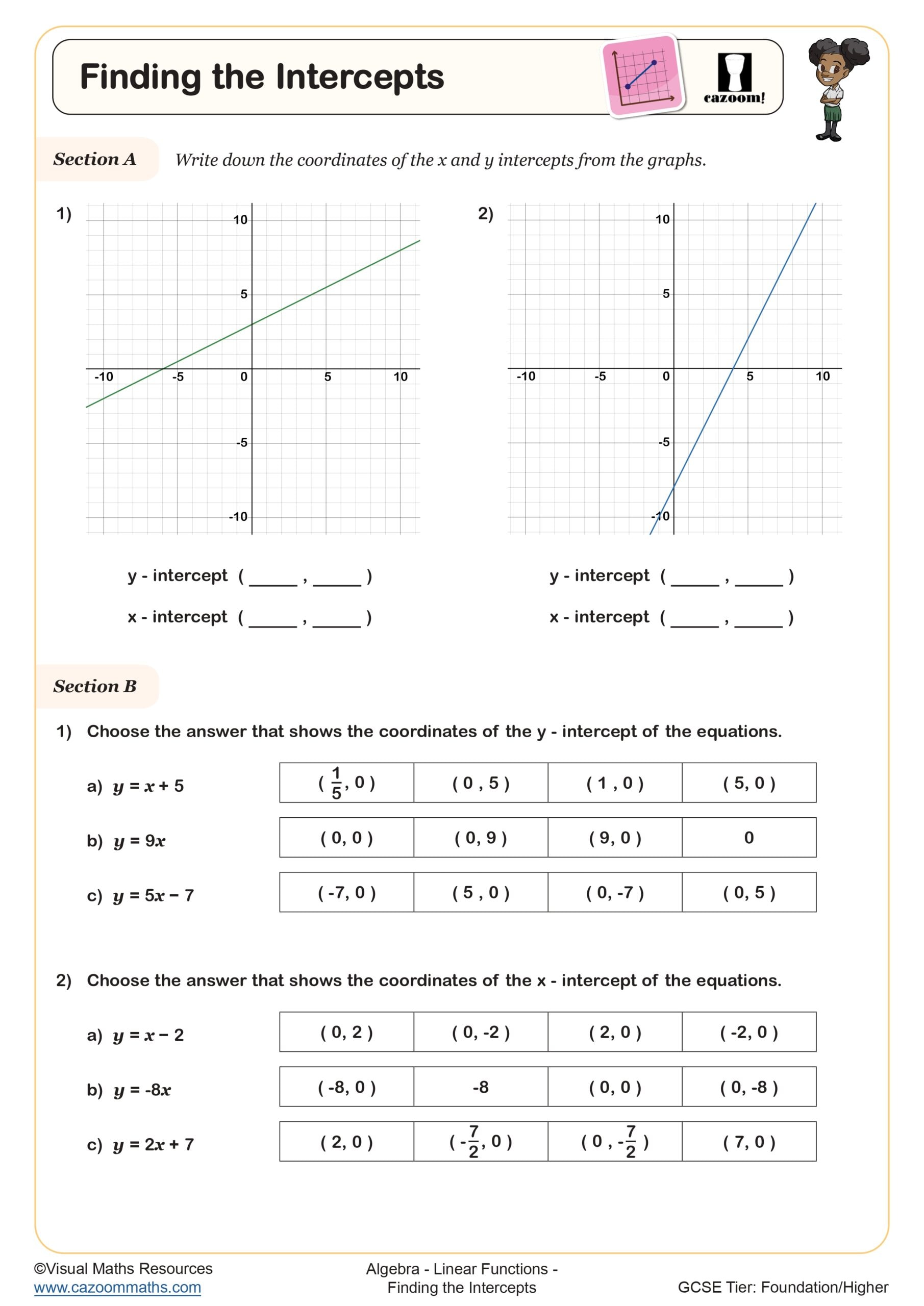
Investigating Straight Line Graphs

Linear Functions (A)
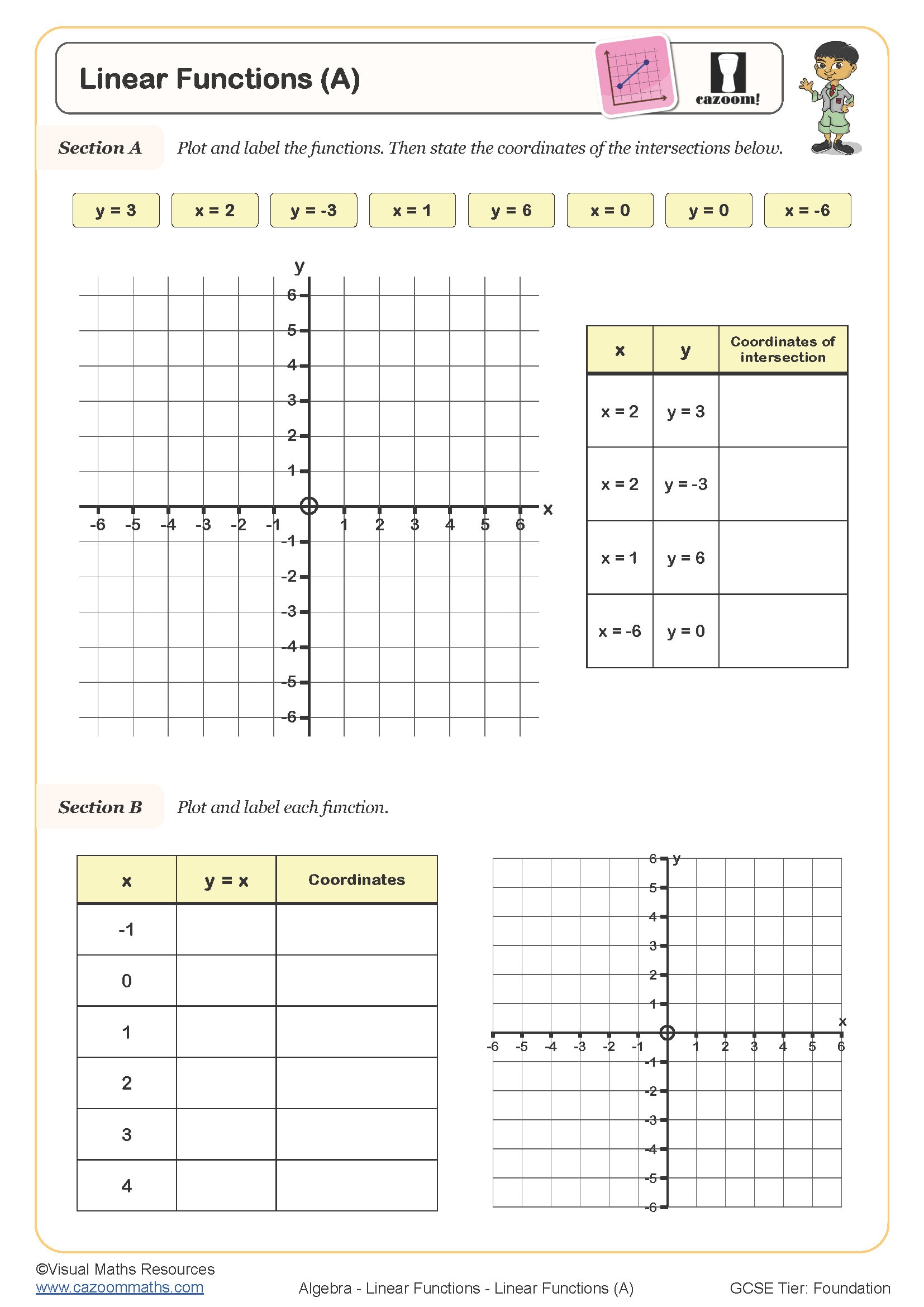
Linear Functions (B)
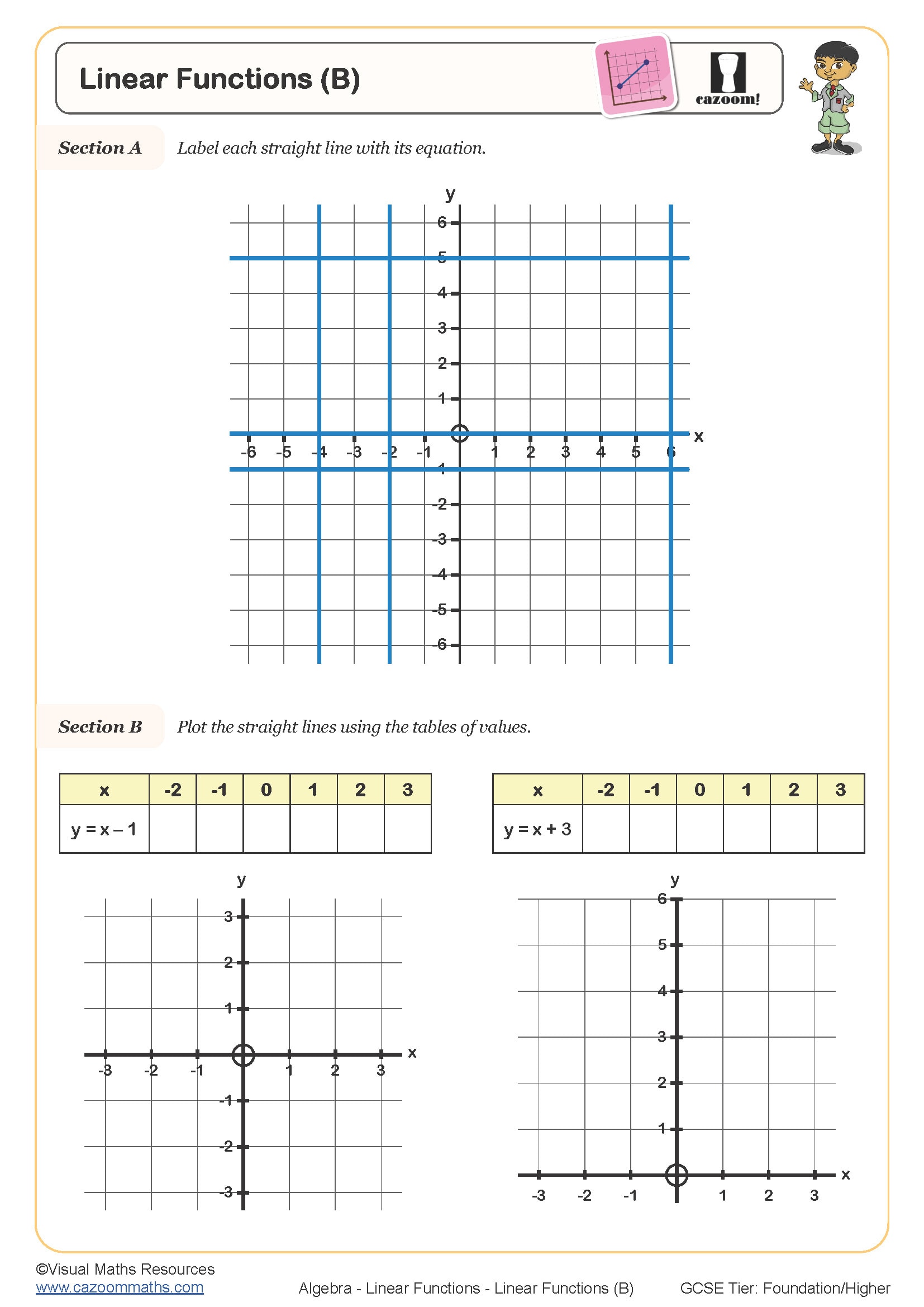
Linear Functions: Card Sort
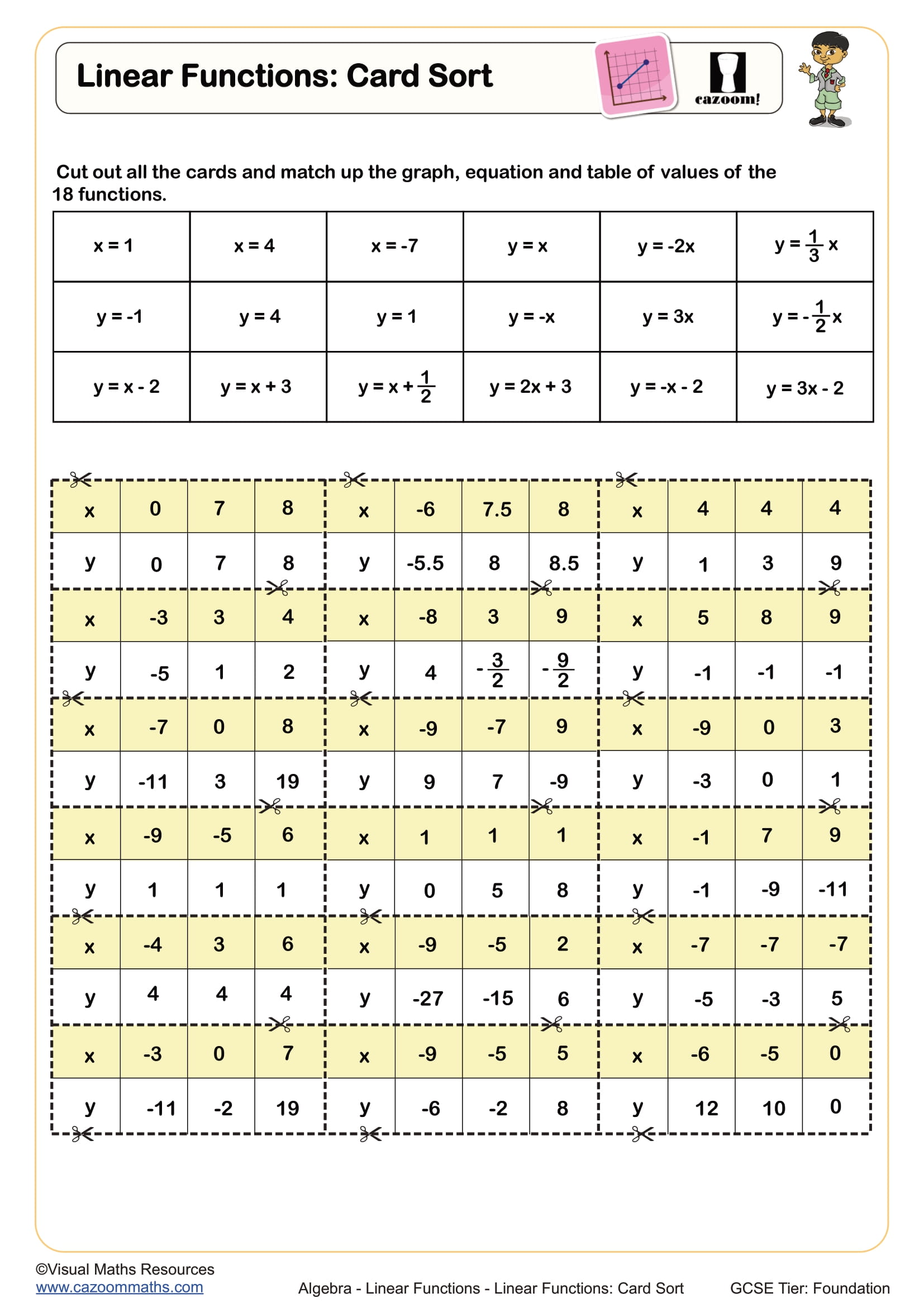
Linear Functions: y = mx
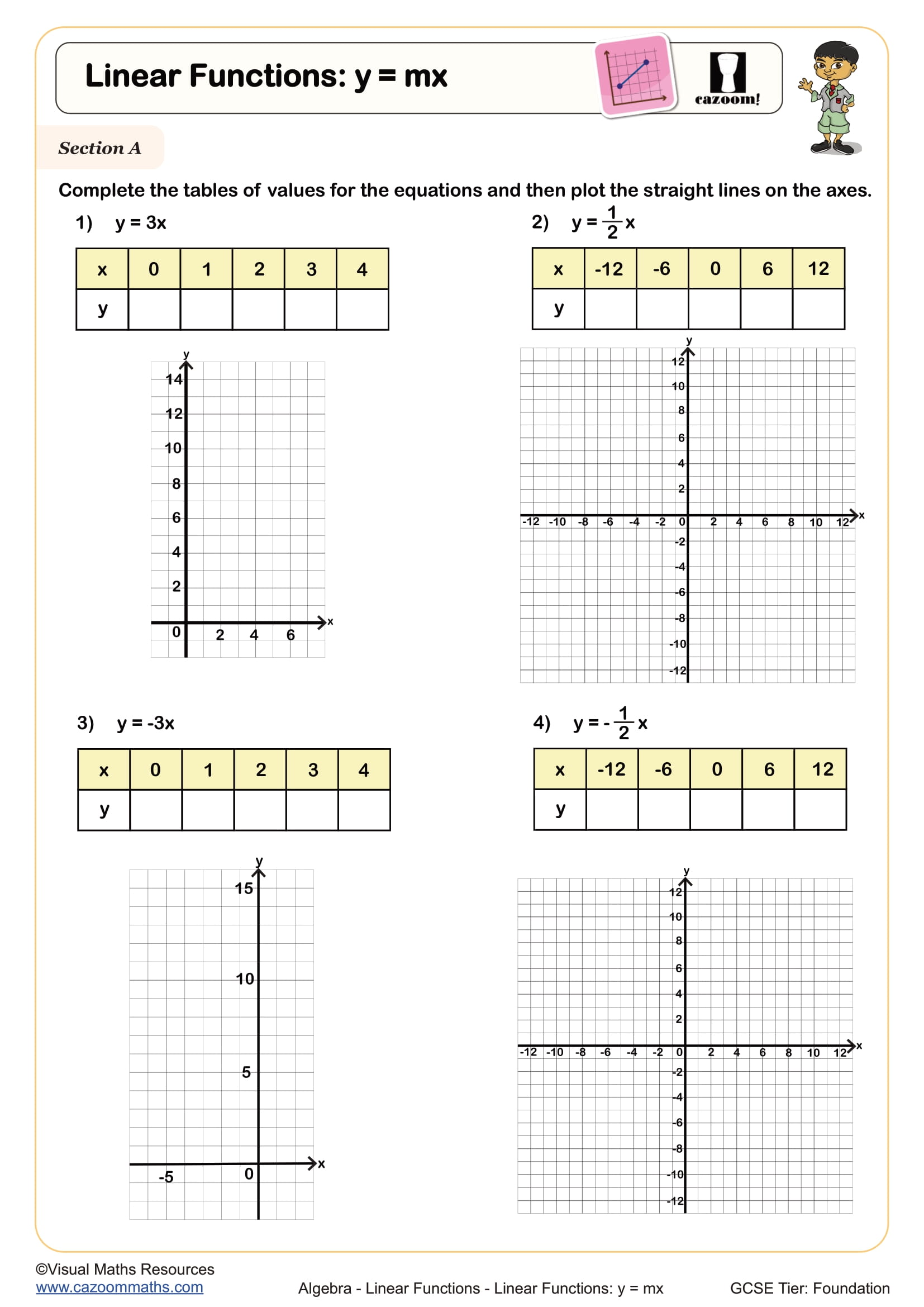
Linear Functions: y = x + c
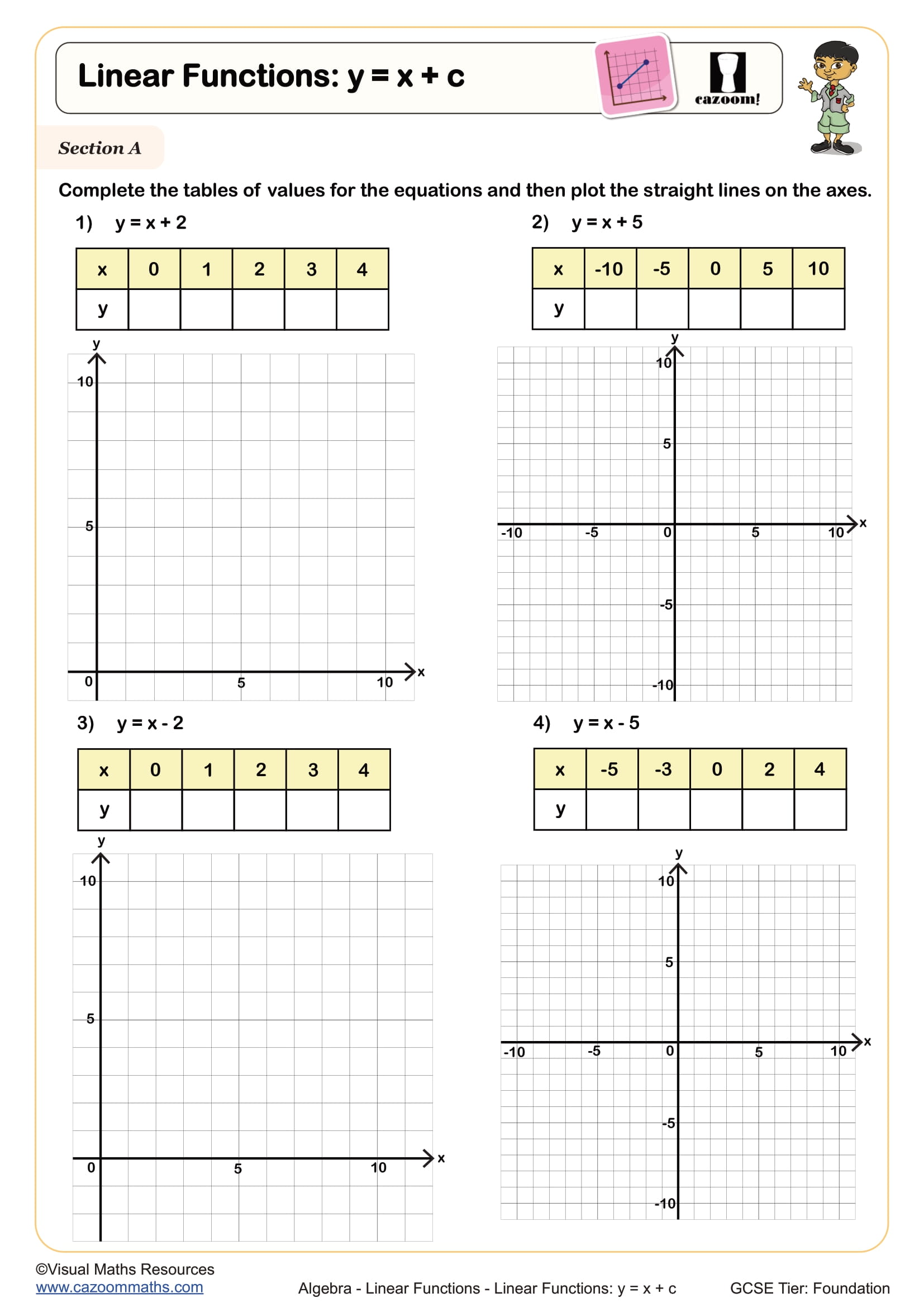
Lines Parallel to the Axes
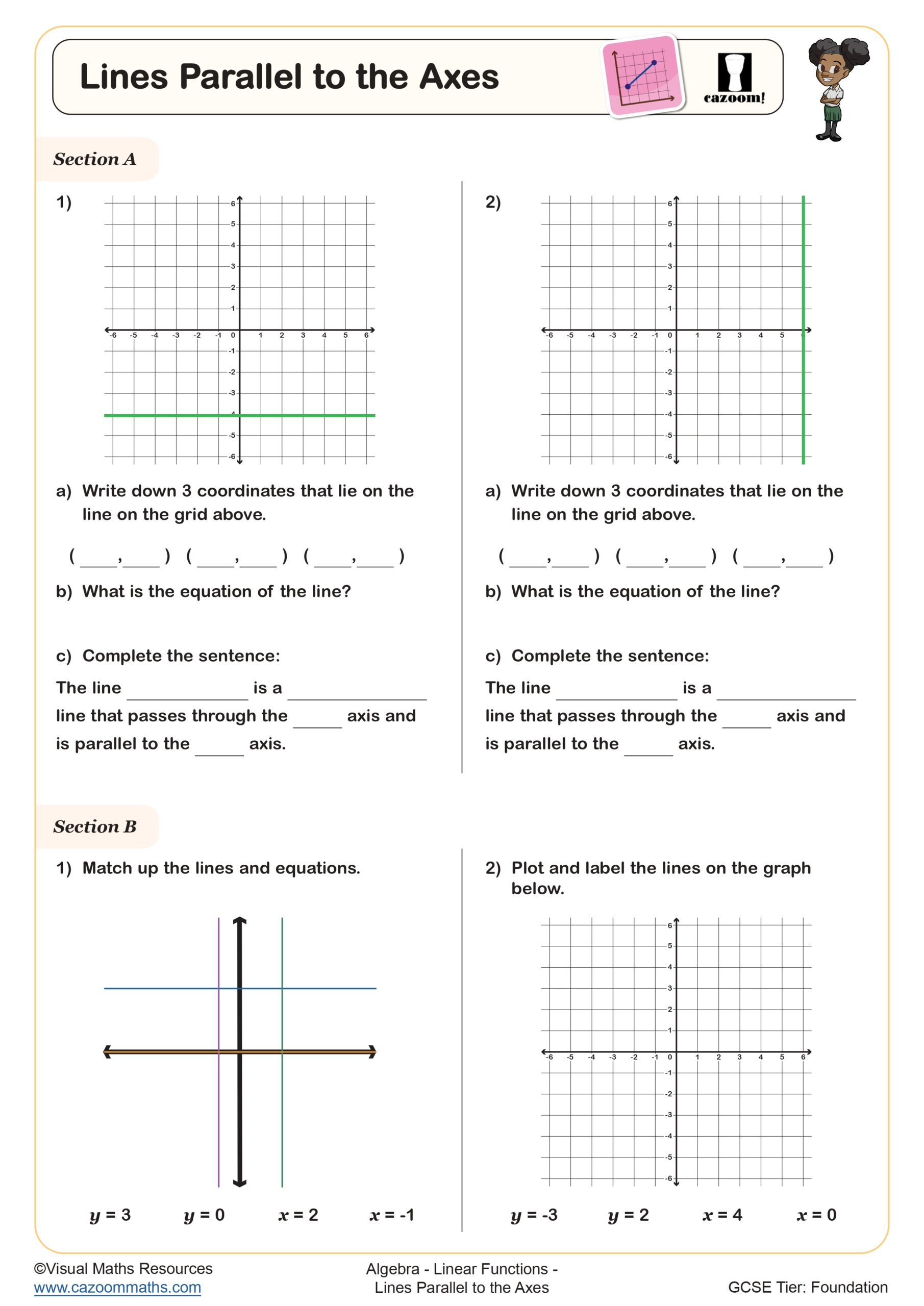
Straight Line Equations and Tables of Values (A)
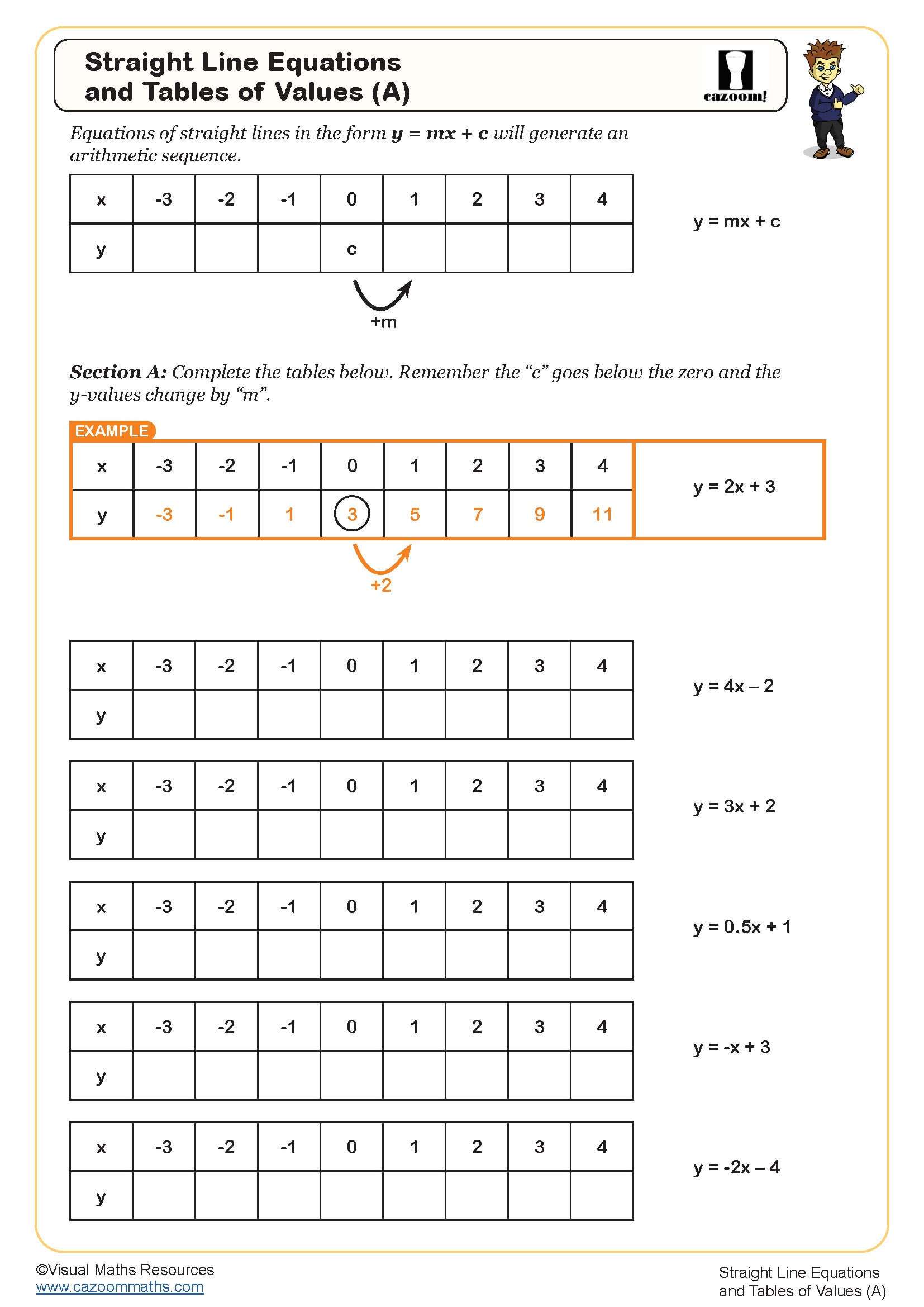
Straight Line Equations and Tables of Values (B)
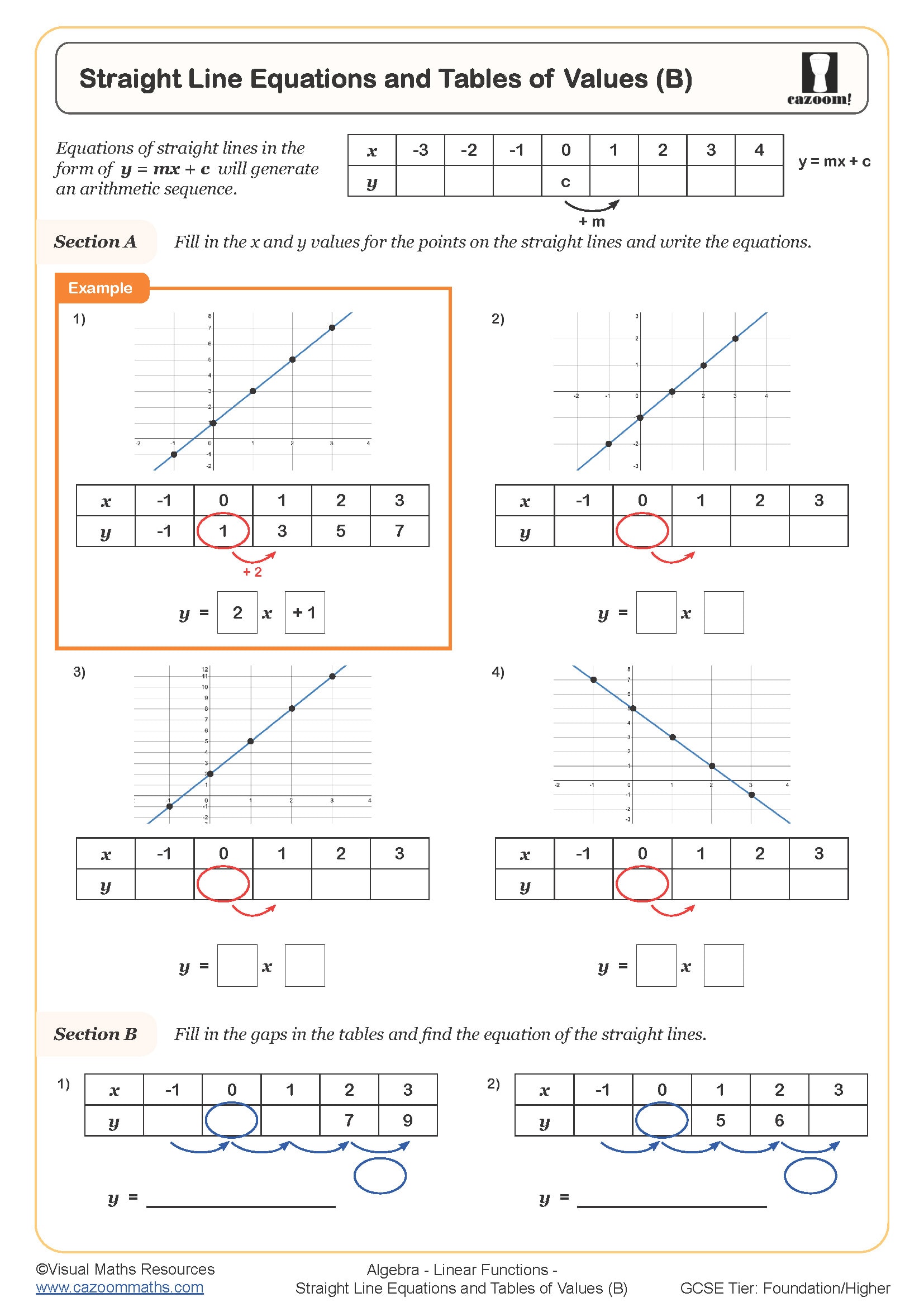
Want Better Results? Use Our PDF Linear Functions Worksheets Today
Students first encounter genuine variable variation through linear relationships, which enable them to study how different quantities affect each other. Students need proper support to understand that graphs show continuous relationships instead of individual points. Students need to practice regularly to develop their ability to move between tables, graphs, and equations since this skill becomes vital for KS3 and future academic years. Students who learn to visualise algebraic expressions can transform meaningless symbols into meaningful patterns, which helps them understand simultaneous equations better. Students learn that graphs of straight lines follow established rules, which enables them to handle unknown situations on their own.
Specific learning benefits include:
• Learn coordinate plotting across four quadrants
• Interprets gradients as rates of change
• Connects algebraic expressions to visual patterns
• Develops functional thinking skills
• Strengthens pattern recognition abilities
• Builds systematic problem-solving approaches
• Improves mathematical communication skills
Curriculum Coverage: Worksheet Topics and Skills Your Students Will Learn
These worksheets progress systematically from basic coordinate work to sophisticated analysis of linear relationships, with each topic building directly on previous understanding. The careful sequencing ensures students develop both procedural fluency and conceptual depth before moving to more complex applications. Questions range from straightforward calculations to multi-step problems requiring strategic thinking.
The core skills covered include:
• Drawing Straight Line Graphs
• Drawing Gradients
• Equations of Parallel Lines
• Finding Gradients
• Finding the Intercepts
• Investigating Straight Line Graphs
• Linear Functions
• Linear Functions: Card Sort
• Linear Functions: y = mx
• Linear Functions: y = x + c
• Lines Parallel to the Axes
• Straight Line Equations and Tables of Values
Why Parents and Teachers Trust KS3 Linear Functions Worksheets for Homework Support
Classroom-tested layouts eliminate ambiguity, allowing students to focus entirely on mathematical reasoning rather than decoding instructions or formats. These worksheets contain differentiated question sets which support mixed-ability classes without needing additional resources or complicated classroom organisation. The answer sheets present complete work for all problems, which shows the solution steps instead of showing only final answers. Teachers can identify exact points of misconception through transparent answer sheets, which enable them to provide targeted help before errors develop into permanent habits. The combination of structured guidance with independent work activities follows research-backed teaching methods, which reduces planning workload while keeping educational standards high. The questions lead students through concrete numerical examples before moving to abstract algebraic thinking, which supports all understanding levels.